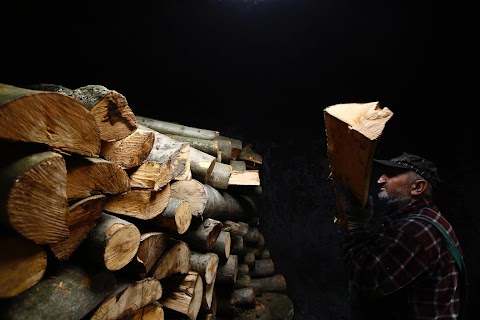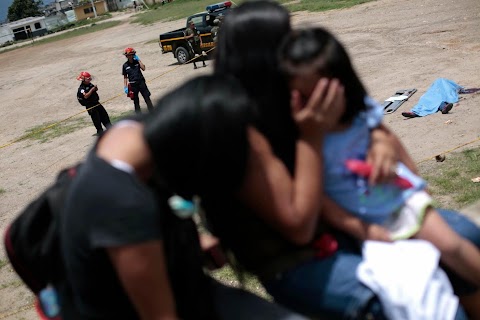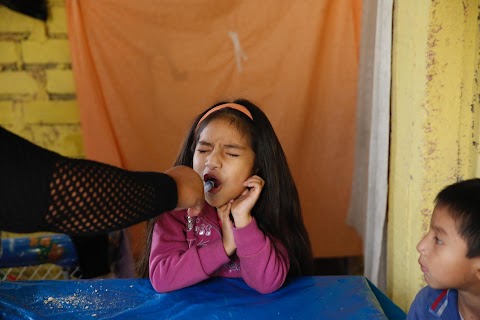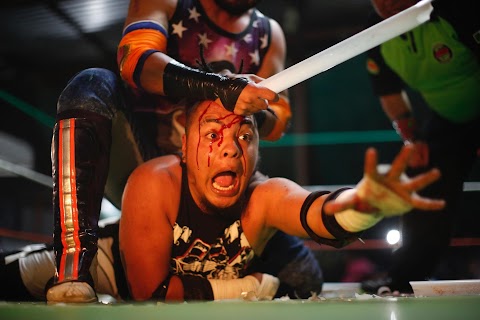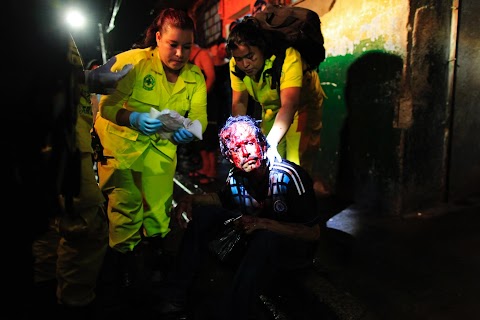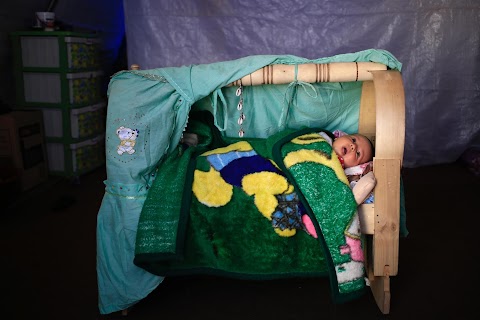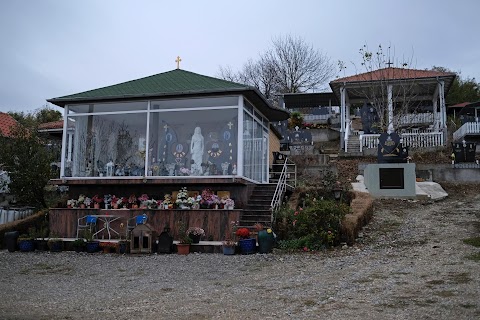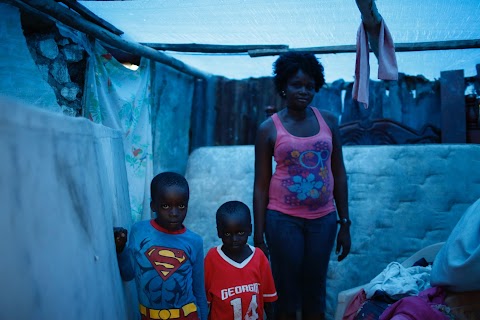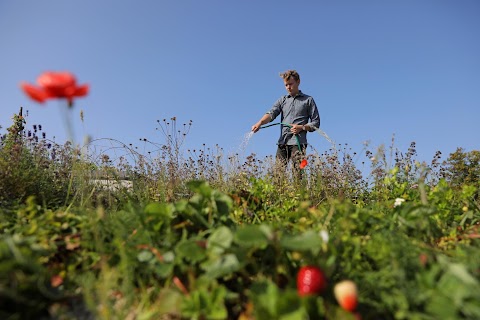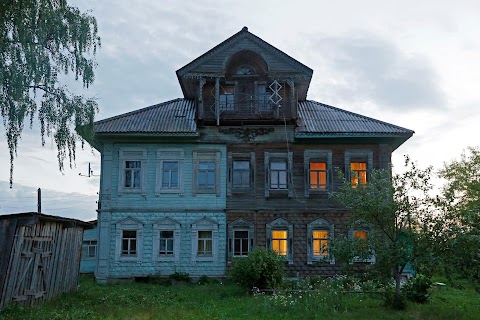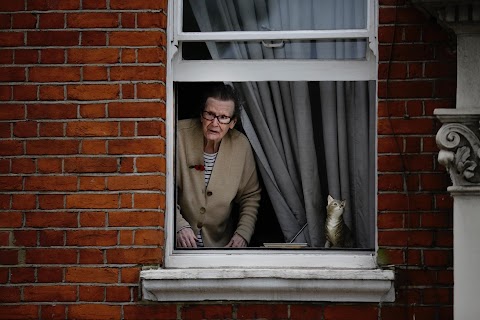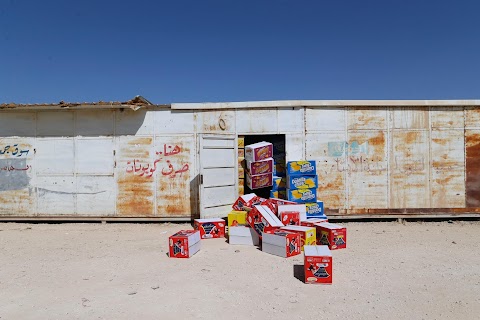
Life in Jordan's Zaatari camp
Mohammad Othman's bicycle route through the marketplace in the Syrian refugee camp of Zaatari was once a struggle against a tide of people.

Now it's an easy ride. So many residents have left for the West, or been forced back to Syria by Jordanian authorities, that Zaatari, once the fastest-growing refugee camp in the Middle East, has gone quiet.
"Before, even if I was walking, I would not be at ease with so many people jostling," said Othman, 24, who recalls how tents for newly arriving refugees could not be erected fast enough when he arrived with his family in 2012.

Where there had been empty desert, a sprawling slum city emerged, with a population of 125,000 at its peak. Around half a million people have passed through.
Shops sprang up offering everything from ice cream to pizzas, mobile phones or wedding gown rentals. Prime spots changed hands for thousands of dollars.

"From the very beginning there was a great industriousness, Syrians being tremendously resourceful," said Paul Stromberg, of the UNHCR refugee agency in Jordan.
The camp's expansion helped to rejuvenate the economy of a neglected part of Jordan previously known for the smuggling of everything from sheep to arms and drugs.

Ostentatious villas have been built by local contractors who secured lucrative donor-financed service deals in Zaatari. Economists estimated that a million dollars a day were being funnelled into the camp at its peak.
But many residents joined the refugee trail to Europe last year, returning to Syria and crossing the wartorn country to travel on via Turkey. Others have left through more formal channels, their applications for immigration accepted by Western states.

There are no new arrivals to replace them. Jordan sealed its 370-km (230-mile) border with Syria in May 2013, citing strain on its limited water resources and economy.
The number of residents of Zaatari has plunged to 79,000, according to an official U.N. figure, and some say it is even lower. Its economy has slumped dramatically.
The operations of the U.N. agencies and NGOs in the camp have shrunk. Funds for cash-for-work programmes to supplement meagre U.N. handouts have dried up, experts and donors say.

Othman now scrapes a living using his donkey cart to collect stale bread to sell as animal fodder. The Jordanian authorities, nervous of any signs of permanence, have banned any form of motorised transport in the camp.

"The Zaatari camp is stagnant," said Saba Mobaslat, a senior official for Save the Children.
"The fact is that we are not receiving new arrivals so whoever leaves the camp for what reason is not being replaced so the population will continue to decline."

Donor states are prodding the Jordanian government to relax labour laws to allow thousands of refugees to work legally in industrial parks and businesses near the camp.

"If only the Jordanians would give us more leeway to better ourselves by ourselves - to give us more freedom in work," said camp resident Abdullah Salamah.
The government of a country shaped by waves of refugees from regional wars is anxious to prevent Zaatari turning into a long-term settlement. Corrugated iron is allowed in, but not cement. Refugees are forbidden to plant trees or lay pavements.

Desperate to earn some cash outside the camp, hundreds of refugees queue daily at a government office to apply for a 15-day permit to leave.
A trickle of refugees, including children, go out through the heavily guarded gate to do casual day work on nearby farms.
Tough conditions mean some cannot wait for the permit, and sneak out illegally. If caught, they can be sent back to Syria.
"The problem is that at any time they can send me back to the war I fled," said Abu Ayham, 38, a refugee from the Damascus suburbs, after a day spent picking tomatoes.
“I would prefer to leave for Europe or America than remain afraid that any day they could send me back."
Slideshow

Children hide under a cover on a wheelchair, as they connect to international aid organsitions' WI-FI.

A man fixes a bicycle.

A man transports bottles of soft drinks.

A man collects his children after school.

Vegetables and fruit are displayed for sale on a donkey cart.

Syrian refugee, Samah Aloshi, 3, stands in front of a clothing shop.

A man hangs wedding dresses inside his shop.

A Syrian refugee sells sweets at his shop.

Refugees shop using humanitarian aid vouchers.

A man undergoes eye-verification to receive his humanitarian aid vouchers.

A young boy is reflected in a mirror.

Children play computer games.

A man and his son feed pigeons.

Nariman Qadhe, 30, widow of a rebel fighter, poses for a photograph with her children as they hold a photograph of their late father. Qadhe's husband was killed during fighting againt forces loyal to Syria's President Bashar al-Assad in Al-Hirak.

Rasha Inha, 30, widow of a rebel fighter, poses for a photograph with her children. Inha's husband was killed during fighting againt forces loyal to Syria's President Bashar al-Assad in Sahnaya, near Damascus.

Fadwe Arashed, 25, widow of a rebel fighter poses for a photograph with her child. Arashed's husband was killed during fighting againt forces loyal to Syria's President Bashar al-Assad near Daraa.

A man fills a container with water.

A boy rides a bicycle.
